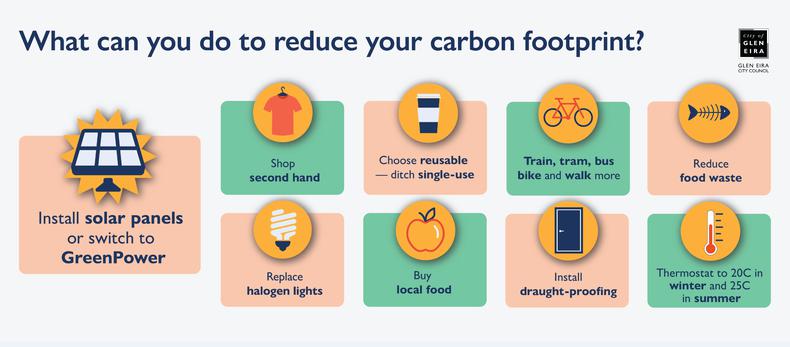We may collect a share of sales from items linked to on this page. Learn more.
Your carbon footprint is the total amount of greenhouse gasses emitted into the atmosphere through certain activities. Some daily activities (such as driving a gas-powered car) are obviously contributing to more carbon dioxide emissions, while others (such as eating meat) aren’t so obvious.
Globally, the average carbon footprint is around 8,000lbs, though it’s even higher in more industrialized nations, such as the U.S. You can calculate your own personal carbon footprint to determine how much greenhouse gas emissions you’re producing so you’ll know exactly how much to cut back— or you can follow the tips listed here to reduce your carbon footprint.
#1: Start Recycling
One of the easiest ways to get started reducing your carbon footprint is by recycling.
The majority of the world still doesn’t recycle, and recycling helps to cut down on energy consumption, therefore reducing greenhouse gas emissions. So instead of throwing away paper, plastic, aluminum, and other recyclable materials, find your nearest recycling center.
In addition to recycling, reducing the amount of materials you use and reusing certain materials can also help reduce your carbon footprint.
When you cut back on the amount of materials you use, you’ll naturally produce less trash. Reusing certain materials for new purposes also prevents you from creating more waste.
#2: Switch Out Some Household Items
Even today, many of the products we use aren’t environmentally friendly. Look for green labels on cleaning products, beauty products, and personal care items— especially the ones that get rinsed down the drain.
Related: How Small Changes Can Make Big Carbon Savings [Infographic]
Using these types of products is not only better for the environment, but better for your health as well.

You should also try to lean towards buying more energy efficient appliances, such as washing machines, dryers, and dishwashers. You can even choose flooring, countertops, windows, and roofing that are more Eco-friendly.
This, combined with energy efficient appliances and green household products puts you closer to having a more environmentally friendly kitchen, laundry room, and home in general.
#3: Smart Home Devices Can Help Save Energy
Smart home devices aren’t always just fancy gadgets that make life more convenient— many of them can actually save energy! Some of the most common examples include:
Smart plugs can cut off the electrical supply to electronics that are plugged in, but aren’t being used. This is good because electronics that are turned off, but still plugged into an outlet will still use energy.
Smart thermostats learn how to regulate the temperature in your home based on your preferences and your schedule, and smart toilets use much less water than traditional toilets. So consider investing in some of these smart home devices.
You should also make the switch to energy efficient light bulbs. These light bulbs use way less electricity than traditional light bulbs. They also last much longer— not having to be replaced as often— saving you money in the long run.
#4: Go Green Outside of the Home Too
The type of lawn care you use can also have an effect on your carbon footprint. Many pesticides (including herbicides, insecticides, and fungicides) are chemical-based that can harm the environment, your pets, and you. Fortunately, there are lawn care services that provide you with a natural option to protect the environment, yourself, and those you love.
Related: 5 Things You Should Know About Solar Panels Before Installing Them in Your Home
Going further outside the home, consider the transportation you use. Even though today’s motor vehicles emit much less carbon dioxide than they did 20 years ago, they still release this CO2.
This is why electric and hybrid vehicles are becoming more popular among the environmentally conscious. It’s a great alternative to walking or biking— which are both green methods of transportation, but not feasible for everyone.
Conclusion
There are many more ways to reduce your carbon footprint at home, such as composting, eating less (or no) meat, switching to low-flow shower heads, and installing solar panels on your home.
To be successful at an Eco-friendly lifestyle, you should start small and work your way up, because starting too big too quickly can cause frustration.
Start with something that makes the most sense and is most feasible for you, whether it’s composting or buying an electric vehicle.
Everyone can do something to help reduce carbon footprint at home. It’s not something that can change drastically overnight, but effort from everyone and every little bit does help.
Fortunately, environmentally friendly consumer products are being produced and marketed on a large scale, making it easier to make the transition to a greener lifestyle.
Save money by converting your home to solar power. Calculate your savings.




